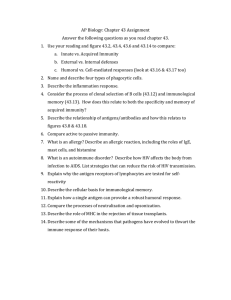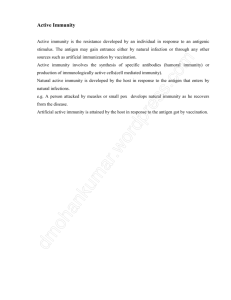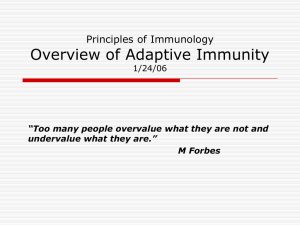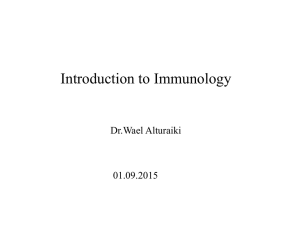Harvard-MIT Division of Health Sciences and Technology
advertisement
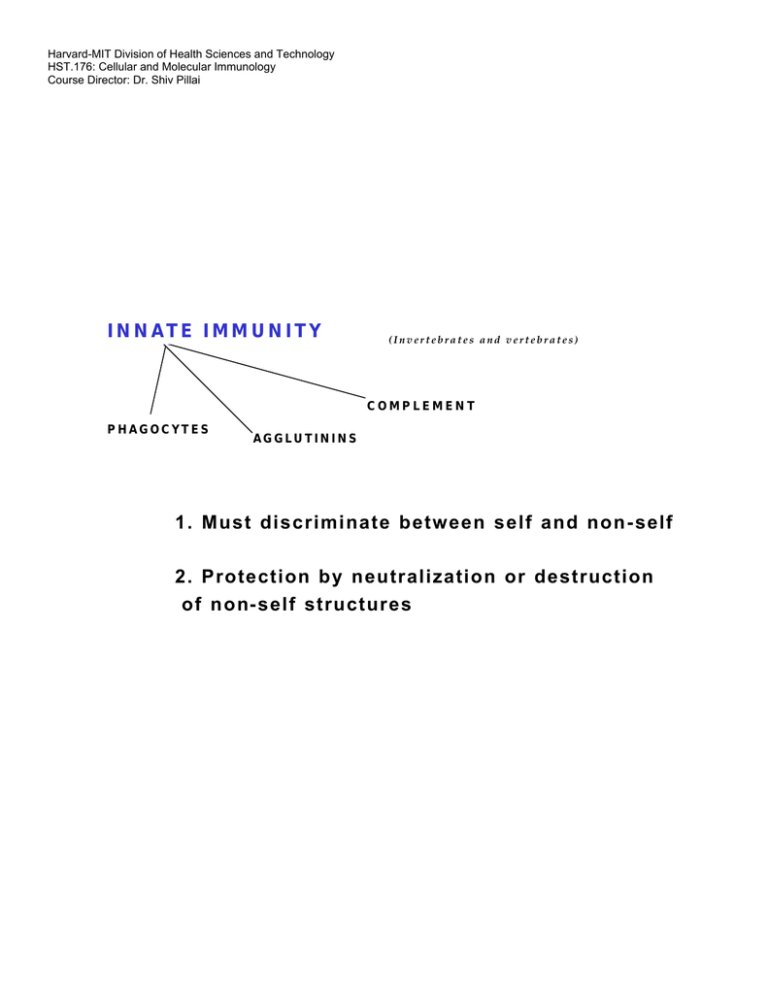
Harvard-MIT Division of Health Sciences and Technology HST.176: Cellular and Molecular Immunology Course Director: Dr. Shiv Pillai INNATE IMMUNITY (Invertebrates and vertebrates) COMPLEMENT PHAGOCYTES AGGLUTININS 1. Must discriminate between self and non- self 2. Protection by neutralization or destruction of non- self structures Multivalent foreign structure Receptors Crosslinked receptors Internalization Signal transduction Neutralize AGGLUTININS Opsonize Fix Complement Discriminate between self and non-self Usually lectins Repeated shape on bacterial surface Bivalent protein with binding sites for repeated shape on bacterial surface. A specific shape which can be recognized by the immune system may also be called an "epitope" or an "antigenic determinant" OPSONINS AND OPSONIZATION Receptor Microbe Opsonin Phagocyte Phagosome Pattern Recognition Receptors SPECIFIC/ADAPTIVE IMMUNITY Generation of Diversity Self/non-self recognition Memory Anticoagulated (non-clotted) blood Neutrophils Plasma Granulocytes Basophils Eosinophils Cells White cells (leukocytes) Red cells (erythrocytes) Monocytes Lymphocytes Platelets (thrombocytes) Coagulated (clotted) blood Clot (Coagulum) Serum (Plasma minus clotting factors) Specific Immunity 1. Active versus Passive Immunity 2. Humoral versus Cell Mediated Immunity Y Y Agglutination Complement fixation YYY C YY YY Y Opsonization Neutralization YYY Antibody dependent cellular cytotoxicity YYY "Immune receptor"/antibody foreign shape antigen clonal expansion secretion of antibodies Y NO SIGNAL YY Y SIGNAL Y ENDOCYTOSED FOR ANTIGEN PRESENTATION ANTIGENS -II ALL IMMUNOGENS ARE ANTIGENS BUT ALL ANTIGENS ARE NOT IMMUNOGENS Viral envelope protein MHC class I­ peptide complex T cell receptor T INNATE IMMUNITY (Invertebrates and vertebrates) COMPLEMENT PHAGOCYTES AGGLUTININS (Vertebrates) SPECIFIC IMMUNITY MHC MOLECULES LYMPHOCYTES ANTIBODIES Generation of Diversity Self-Nonself Discrimination Central lymphoid organs Periphery antigen receptor "The death Proliferation window" and activation Rearrangement Elimination of Final of immune self repertoire receptor genes reactive cells in responders self antigen self antigen self antigen Immature cells die if stimulated death death death Initial lymphocyte repertoire is generated in central lymphoid organs (the bone marrow and the thymus) After deletion of self reactive lymphocytes mature cells migrate to peripheral lymphoid organs Mature cells foreign antigen proliferate and differentiate if stimulated E M M E Effectors acquire the ability to leave lymph nodes and enter the tissues which contain the foreign antigen which they will zap or mop up M Some activated cells exhibit memory (M) while others are revved up immune effectors (E)
